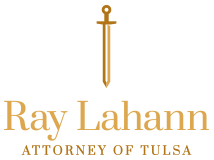Oklahoma workers in all industries face work-related hazards, some of which involve confined spaces. The Occupational Safety and Health Administration prescribes strict regulations that could prevent workplace injuries to workers who have to work in these dangerous areas. A confined space is an area with limited exit and entry means — often a single way in or out, and workers must spend limited periods inside. When specific hazards exist, it becomes a permit-required area that is clearly signposted with warnings and entry requirements.
Safety and health threats that define a confined space as a permit-required area include atmospheres that are oxygen deficient, flammable or toxic. Furthermore, permits are required for spaces in which physical or mechanical hazards exist, or where loose flowing materials such as grain could cause engulfment or suffocation. Special care is necessary for areas where oxygen might be sufficient until a worker does welding or other tasks that use oxygen.
Atmospheric tests must be carried out before anyone enters a confined space, and the worker must have some means of contact with someone outside. Life-threatening atmospheres can be caused when harmful gasses are trapped due to inadequate ventilation. When nitrogen is used to prevent fires, workers need respirators because nitrogen is non-life-sustaining. Sparks can set off explosions, and even the dust from finely ground fibers, grains and plastic can be explosive when ignited. Tanks and grain bins into which materials flow must have devices to regulate or stop the flow while workers are present.
Sadly, many employers do not comply with confined-space regulations, resulting in many workplace injuries — which are often fatal. Injured workers in Oklahoma or the surviving families of those who did not survive confined-space accidents are typically entitled to workers’ compensation benefits that will cover medical expenses, end-of-life expenses and lost income. An experienced workers’ compensation attorney can be a valuable asset during the administrative and legal proceedings of the claims process.

